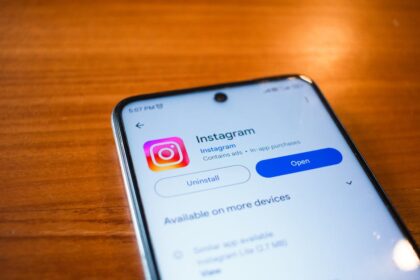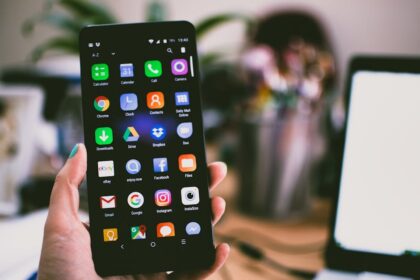Navigating the intricacies of Instagram ad optimization is paramount for businesses aiming to significantly boost conversions. The platform, with its highly visual nature and expansive user base, offers unparalleled opportunities to connect with potential customers and drive desired actions. Effective Instagram advertising strategy hinges on a multi-faceted approach, encompassing everything from precise audience targeting to compelling creative development and robust conversion tracking. Achieving superior Instagram ad performance requires a deep dive into the underlying mechanics of the Facebook Ads Manager, the primary control center for all Instagram advertising efforts.
Strategic Foundation: Defining Conversion Goals and Key Performance Indicators
Before launching any Instagram ad campaign, a clear articulation of conversion goals is non-negotiable. Conversions can manifest in various forms: a direct product purchase from an e-commerce store, a lead generated through a form submission, an app installation, a newsletter subscription, or even a simple click to a specific page on a website. Each goal necessitates a distinct approach in terms of ad setup, bidding, and optimization. For e-commerce businesses, the primary goal is often “Purchases,” while service-based businesses might prioritize “Leads” or “Contact Form Submissions.” Mobile app developers will focus on “App Installs” or “In-App Purchases.” Understanding the specific desired action allows for the selection of the most appropriate campaign objective within Facebook Ads Manager, which is crucial as it dictates the ad delivery system’s optimization efforts.
Key Performance Indicators (KPIs) serve as critical benchmarks for evaluating the success of Instagram ad optimization efforts. Beyond raw conversion numbers, essential KPIs include the Conversion Rate (conversions divided by clicks or impressions), Cost Per Acquisition (CPA) or Cost Per Lead (CPL), Return on Ad Spend (ROAS) for e-commerce, Click-Through Rate (CTR), and Cost Per Mille (CPM) or Cost Per Thousand Impressions. A high CTR indicates strong ad creative and audience relevance, while a low CPA/CPL signifies efficient spending. ROAS directly measures profitability. Regularly monitoring these KPIs against predefined targets enables advertisers to identify areas for improvement and make data-driven decisions. The initial budget allocation should be aligned with these conversion goals. For instance, a campaign aiming for high-value purchases might tolerate a higher CPA than one focused on low-cost lead generation. Bidding strategies, such as lowest cost, bid cap, or cost cap, are chosen based on the desired balance between volume and cost-efficiency for the defined conversion event.
Understanding the Instagram Ad Ecosystem and Placement Dynamics
Instagram is no longer just a feed-based platform; its ecosystem has expanded significantly, offering a diverse array of ad placements that cater to different user behaviors and content consumption patterns. Understanding these placements is fundamental to effective Instagram ad optimization.
- Instagram Feed: The classic placement, appearing organically as users scroll through their main feed. Ads here typically consist of single images, videos, or carousels. They often require high-quality visuals and compelling, concise copy that blends seamlessly with organic content.
- Instagram Stories: A highly engaging, full-screen, vertical format that accounts for a substantial portion of user activity. Stories ads are immersive and fleeting, demanding captivating visuals, sound-on strategies, and clear, quick calls to action. Polls, quizzes, and stickers can be integrated for interactive engagement, leading to higher conversion rates for certain objectives.
- Instagram Reels: A rapidly growing short-form video content hub. Reels ads are designed to integrate natively within the organic flow of Reels, demanding dynamic, entertaining, and fast-paced video creatives. This placement is excellent for brand awareness and can drive significant engagement, which can indirectly lead to conversions.
- Instagram Explore: This section is where users discover new content and accounts based on their interests. Ads here appear as part of the visual grid or when users click into specific posts. Being discovered in Explore offers an opportunity to reach users who are actively seeking new content, making it valuable for broad audience targeting and brand discovery.
- Instagram Shop: A dedicated tab for shopping directly within the app. Ads can direct users to product detail pages within the Instagram Shop experience, streamlining the path to purchase for e-commerce brands. This placement offers a native, frictionless shopping experience.
- Instagram Profile Feed: Ads appearing within an Instagram profile’s grid, specifically for users who browse a profile’s content. This is a less common but sometimes effective placement.
While Facebook Ads Manager allows for automatic placements, which leverage the system’s algorithm to distribute ads across the most performant placements, manual placement selection can be beneficial for fine-tuning Instagram ad performance. For example, if extensive testing reveals that Instagram Stories consistently deliver the lowest Cost Per Conversion for a specific product, an advertiser might opt to solely run ads in Stories. Conversely, if high-quality video content performs exceptionally well in Reels, prioritizing that placement could yield better results. A mobile-first advertising approach is imperative across all Instagram placements, given that the vast majority of Instagram users access the platform via mobile devices. This means ensuring creatives are optimized for vertical viewing, load quickly on mobile networks, and landing pages are perfectly responsive on smartphones.
Audience Targeting Mastery: Precision for Higher Conversions
The cornerstone of Instagram ad optimization is unparalleled audience targeting. Reaching the right people with the right message at the right time is the most significant factor in boosting conversions. Facebook Ads Manager provides an extensive suite of targeting options, allowing for granular control over who sees your ads.
-
Core Audiences: This foundational targeting method allows advertisers to define audiences based on a rich set of demographic, interest, and behavioral data.
- Demographics: Includes age, gender, location (country, state, city, zip code), language, education level, relationship status, and even parental status. For example, a baby product company would target parents of toddlers, while a luxury travel agency might target high-income individuals.
- Interests: Based on users’ stated interests, pages they like, content they engage with, and keywords associated with their online behavior. This is incredibly powerful for reaching niche markets. A yoga studio might target users interested in “yoga,” “meditation,” “wellness,” or “health and fitness.”
- Behaviors: Derived from users’ activities on and off Facebook/Instagram. This includes purchase behavior (e.g., “online shoppers”), digital activities (e.g., “Facebook page admins”), travel behaviors, and mobile device usage. Targeting “online shoppers” can be highly effective for e-commerce businesses.
- Connections: Targeting people who are connected to your Facebook Page, event, or app, or excluding them. This can be useful for nurturing existing followers or expanding reach to their friends.
-
Custom Audiences: These are built from your existing data sources, enabling you to retarget individuals who have already interacted with your business, indicating a higher level of intent. Custom Audiences are critical for conversion rate optimization (CRO) on Instagram.
- Website Custom Audience (WCA): Requires the Facebook Pixel to be installed on your website. This allows you to target people who visited your website, specific pages, or even performed specific actions (e.g., added to cart but didn’t purchase). Segmenting WCAs (e.g., visitors in the last 7 days vs. 30 days) allows for tailored messaging.
- Customer List Custom Audience: Uploading a customer email list, phone numbers, or user IDs. Instagram matches these to user profiles, allowing you to target existing customers for repeat purchases, loyalty programs, or to exclude them from acquisition campaigns.
- App Activity Custom Audience: For mobile apps, targeting users based on their in-app behavior (e.g., installed the app, completed a tutorial, made a purchase within the app).
- Engagement Custom Audience: Built from people who have interacted with your content on Facebook or Instagram. This includes video views (target users who watched 75% or 95% of your video), Instagram profile engagement, Facebook Page engagement, or lead form interactions. These audiences are highly valuable as they’ve already shown interest in your brand.
-
Lookalike Audiences: Once you have a high-quality Custom Audience (e.g., purchasers, top 10% website visitors, highly engaged video viewers), Lookalike Audiences allow you to find new people who share similar characteristics with your existing valuable customers or prospects.
- Source Audience Quality: The effectiveness of a Lookalike Audience heavily depends on the quality and size of its source Custom Audience. A Custom Audience of 1,000 to 50,000 high-value customers is ideal.
- Audience Size Scaling: Lookalike Audiences are typically created as a percentage of the population of the target country (e.g., 1%, 5%, 10%). A 1% Lookalike will be the closest match but smaller in size, while a 10% will be broader but might sacrifice some similarity. Testing different percentages is crucial for finding the right balance between reach and relevance. Starting with 1-2% and scaling up once performance is proven is a common strategy.
-
Exclusion Targeting: Equally important as inclusion, excluding certain audiences prevents wasted ad spend and avoids ad fatigue. For instance, if you’re running an acquisition campaign, you should exclude your existing customer list to focus on new prospects. If you’re running a retargeting campaign for abandoned carts, you should exclude those who have already completed a purchase.
Leveraging Instagram Audience Insights within Facebook Ads Manager provides valuable data on your existing followers and website visitors, including demographics, interests, and other pages they like. This data can inform and refine your core audience targeting, leading to more relevant and higher-converting ad sets. The continuous analysis of audience performance metrics, such as unique reach, frequency, and conversion rate per audience segment, is paramount for ongoing Instagram ad optimization.
Creative Excellence: The Visual and Narrative Engine for Conversions
Instagram is inherently a visual platform, making creative excellence the linchpin of any successful Instagram ad optimization strategy. High-quality visuals, compelling copywriting, and thoughtful ad format selection are all vital for capturing attention and prompting action.
-
Visuals: The First Impression:
- High-Quality Imagery and Video: Blurry images or pixelated videos are instant conversion killers. Invest in professional photography and videography. Images should be striking, well-lit, and convey a clear message. Videos should be crisp, engaging from the first few seconds, and ideally have sound for Stories and Reels.
- Aspect Ratios: Optimizing for placement is critical.
- Feed: 1:1 (square) or 4:5 (vertical) for images; 4:5 for videos for maximum screen real estate.
- Stories and Reels: 9:16 (full-screen vertical) is mandatory for an immersive experience.
- Explore: Often works well with 1:1 or 4:5.
- Branding Consistency: Maintain consistent brand colors, fonts, and logos across all creatives to build brand recognition and trust. Ensure your brand identity is immediately recognizable.
- Authenticity and User-Generated Content (UGC): Instagram users appreciate authenticity. UGC often outperforms highly polished, studio-produced content because it feels more genuine and relatable. Encourage customers to share their experiences and leverage this content (with permission) in your ads. Testimonials embedded in visuals can also be powerful.
- Before-and-Afters / Problem-Solution: Visually demonstrating how your product solves a problem or transforms a situation is highly effective.
-
Copywriting: Guiding the Gaze to Action:
- The Hook: The first line of your ad copy is crucial, especially in the feed where only the first few lines are visible without clicking “more.” It needs to grab attention immediately and provide a compelling reason to keep reading. Ask a question, state a bold claim, or highlight a pain point.
- The Body: Elaborate on the value proposition, highlight benefits (not just features), and address potential objections. Use concise, easy-to-read language. Emojis can break up text and add personality, but use them judiciously.
- Social Proof: Integrate testimonials, star ratings, user counts, or media mentions to build trust and credibility. Phrases like “Join 10,000 happy customers” or “Rated 4.9 stars” are potent conversion boosters.
- Urgency and Scarcity: Limited-time offers, limited stock, or exclusive discounts can create a sense of urgency, encouraging immediate action. “Sale ends soon!” or “Only X items left!” are classic examples.
- Clear Call-to-Action (CTA): This is non-negotiable. Tell people exactly what you want them to do. Use strong action verbs like “Shop Now,” “Learn More,” “Sign Up,” “Download,” “Get Quote,” or “Book Now.” Ensure the CTA button within the ad matches your copy.
- Value Proposition: Clearly articulate what makes your offer unique and valuable. Why should someone choose you over a competitor?
-
Ad Formats for Conversion:
- Single Image/Video Ads: Versatile and straightforward. Ideal for showcasing a single product or service, or a clear message.
- Carousel Ads: Allows for up to 10 images or videos within a single ad unit. Excellent for:
- Showcasing multiple products.
- Telling a story in sequence.
- Highlighting different features of a product.
- Before-and-after comparisons.
- Collection Ads: A full-screen, instant experience format designed specifically for e-commerce. When a user clicks, they are taken to an immersive full-screen experience that showcases products and streamlines the path to purchase without leaving Instagram. Highly effective for driving purchases.
- Lead Ads: Allow users to submit their contact information directly within Instagram, eliminating the need to leave the app. Excellent for lead generation, particularly for services, webinars, or gated content. Pre-filled forms reduce friction.
- Stories Ads with Interactive Elements: Polls, quizzes, and question stickers in Stories ads can significantly increase engagement and provide valuable insights, often leading to higher conversion rates as users feel more involved. “Swipe Up” (or link stickers for businesses) is the primary CTA for Stories.
-
Testing Creatives (A/B Testing and Dynamic Creative): Never assume one creative will always perform best. Continuous A/B testing is crucial for Instagram ad optimization. Test different:
- Visuals (images, videos, colors, models).
- Headlines and primary text.
- Calls to action.
- Value propositions.
Dynamic Creative, a feature in Facebook Ads Manager, automates the process by combining various headlines, images, and CTAs to create numerous ad variations, serving the best-performing combinations to your audience. This can significantly accelerate the learning process and improve Instagram ad performance.
Ad Placement Optimization: Strategic Distribution for Conversion
While automatic placements are convenient, strategic ad placement optimization is a powerful lever for boosting conversions. Different placements yield different results depending on the campaign objective, creative type, and target audience.
-
Manual Placement Selection:
- Performance Analysis: Consistently review your Ads Manager reports to see which placements are driving the most conversions at the lowest cost. If Stories ads consistently outperform Feed ads for purchases, consider allocating a larger portion of your budget to Stories.
- Creative Suitability: Certain creative types are inherently better suited for specific placements. Full-screen vertical videos are designed for Stories and Reels. Collection ads are perfect for the Shop tab. Matching creative to placement enhances user experience and conversion likelihood.
- User Behavior: Consider how users interact with each placement. Feed users might be scrolling more passively, while Stories users are often highly engaged in short, punchy content. Explore users are in a discovery mindset. Tailor your message accordingly.
- Device Optimization: As mentioned, Instagram is mobile-first. Ensure all your creatives and landing pages are flawlessly rendered and optimized for mobile devices. This includes fast loading times, responsive design, and easy navigation on a small screen.
-
Strategic Allocation:
- Instead of simply ticking all placement boxes, analyze the unique value of each. For brand awareness, Reels might be exceptional. For direct response purchases, Collection Ads in the Shop tab or well-optimized Stories ads could be superior.
- Sometimes, specific placements might have lower CPMs but also lower conversion rates, making the CPA higher. Always focus on the cost per desired action rather than just impression or click costs when optimizing for conversions.
- Run separate ad sets or campaigns for different placements if the creative and bidding strategies need to be vastly different to achieve optimal results. This allows for more precise control and budget allocation.
Landing Page Optimization (LPO) for Instagram Traffic: The Crucial Bridge
An exceptional Instagram ad is only half the battle. If the landing page it directs to is poor, all the preceding optimization efforts are wasted. Landing page optimization (LPO) is a critical component of boosting conversions from Instagram ads. The landing page must provide a seamless, relevant, and compelling experience that converts traffic into customers or leads.
- Relevance to Ad Creative and Offer: The landing page must be a direct continuation of the ad. If your ad promotes a specific product, the user should land directly on that product’s page. If it’s a special offer, the offer should be prominently displayed and easily redeemable on the landing page. Any disconnect will lead to high bounce rates and low conversion rates.
- Mobile Responsiveness and Speed: This is non-negotiable for Instagram traffic. The page must load incredibly fast on mobile devices (aim for under 3 seconds). Use tools like Google PageSpeed Insights to identify and fix speed issues. The design must be responsive, adapting perfectly to various screen sizes, ensuring all elements are easily viewable and clickable on a smartphone.
- Clear Call to Action (CTA): Just like the ad, the landing page needs prominent, clear, and actionable CTAs. They should be easy to spot, use strong verbs, and be strategically placed above the fold and repeated as the user scrolls.
- Minimizing Distractions: A high-converting landing page is typically focused. Avoid unnecessary navigation menus, excessive pop-ups (especially immediately upon arrival), or distracting elements that divert attention from the primary conversion goal.
- Trust Signals and Social Proof: Build confidence with trust badges (secure payment, privacy policy), customer testimonials, reviews, star ratings, and security certificates. These elements reassure visitors and encourage them to complete the desired action.
- Form Optimization: If your conversion goal is lead generation, your form needs to be optimized for mobile. Keep fields to a minimum, use clear labels, and enable auto-fill where possible. Consider multi-step forms for longer processes to reduce perceived effort.
- Compelling Headlines and Subheadings: Mirroring the ad’s compelling hook, the landing page’s headlines should immediately reaffirm the value proposition and capture attention. Use subheadings to break up content and highlight key benefits.
- Visual Consistency: Ensure the landing page’s branding, color scheme, and overall aesthetic are consistent with your Instagram ad. This creates a cohesive user experience and reinforces brand identity.
- Frictionless User Experience: Make the conversion process as smooth as possible. For e-commerce, a streamlined checkout process with minimal steps is crucial. For lead generation, a simple, quick form.
- A/B Testing Landing Page Elements: Continuously test different headlines, CTAs, button colors, images, form layouts, and even overall page designs to find what resonates best with your Instagram audience and drives the highest conversion rates. Even minor tweaks can lead to significant improvements in conversion rate optimization (CRO).
Tracking and Measurement: The Data-Driven Approach to Conversion Optimization
Without robust tracking and measurement, Instagram ad optimization becomes a guessing game. Accurate data is the fuel for informed decision-making, allowing you to understand what’s working, what’s not, and where to allocate your budget for maximum conversions.
-
Facebook Pixel Implementation: This is the foundational tracking tool for any Instagram advertising strategy. The Facebook Pixel is a piece of JavaScript code that you place on your website. It tracks website visitor behavior, allowing you to:
- Track Standard Events: Such as
PageView,ViewContent,AddToCart,InitiateCheckout, andPurchase. These pre-defined events are crucial for optimizing for conversions. - Set Up Custom Conversions: Define specific conversion events that are not covered by standard events (e.g., a specific form submission, a download of a PDF).
- Create Custom Audiences: For retargeting based on website activity (e.g., all website visitors, visitors to specific pages, or people who added an item to their cart but didn’t purchase).
- Optimize Ad Delivery: The Pixel feeds data back to Facebook, allowing the algorithm to find more people likely to convert based on past behavior.
- Measure ROAS: For e-commerce, the Pixel can track the value of purchases, providing crucial ROAS data.
Ensuring the Pixel is correctly installed and firing accurately for all relevant conversion events is the first and most critical step in conversion tracking on Instagram. Use the Facebook Pixel Helper Chrome extension to verify its functionality.
- Track Standard Events: Such as
-
Conversions API (CAPI): In light of increasing data privacy concerns (e.g., iOS 14+ updates), the Conversions API (CAPI) provides a more reliable and privacy-friendly way to send website and offline event data directly from your server to Facebook. This bypasses browser-based tracking limitations, leading to more accurate conversion reporting and improved ad optimization. Integrating CAPI alongside the Facebook Pixel offers maximum data resilience and accuracy, enhancing your Instagram ad analytics. While more technical, it’s becoming a necessity for robust conversion tracking.
-
Attribution Models: Understanding how different touchpoints contribute to a conversion is vital. Facebook Ads Manager uses a default 7-day click and 1-day view attribution window (meaning it attributes a conversion if someone clicked your ad within 7 days or viewed it within 1 day). You can customize this attribution window. Consider the customer journey: some conversions are immediate, others take time. A longer attribution window might capture conversions from earlier awareness-stage ads. Experiment with different attribution models if you use third-party analytics tools (e.g., Google Analytics) to get a holistic view of performance.
-
UTM Parameters: Use UTM parameters (Urchin Tracking Module) in your ad URLs to provide granular data to Google Analytics or other web analytics platforms. This allows you to track traffic and conversions coming specifically from your Instagram ads, breaking down performance by campaign, ad set, and even individual ad creative.
utm_source=instagramutm_medium=paid_socialutm_campaign=your_campaign_nameutm_content=ad_creative_nameutm_term=keyword_or_audience(less common for Instagram)
-
Reporting in Ads Manager: Regularly delve into the Ads Manager reports. Customize your columns to display the KPIs most relevant to conversions (e.g., conversions, cost per conversion, ROAS, purchase value, leads).
- Breakdowns: Use breakdowns by time, placement, age, gender, region, and device to identify trends and performance variations. For instance, you might discover that your ads convert exceptionally well for women aged 25-34 in Stories, allowing you to reallocate budget or refine targeting.
- Ad Relevance Diagnostics: Pay attention to the “Ad Relevance Diagnostics” scores (Quality Ranking, Engagement Rate Ranking, Conversion Rate Ranking). Low scores indicate issues that need to be addressed, such as poor ad creative, audience misalignment, or an uncompetitive offer. Improving these scores can significantly boost Instagram ad performance.
A/B Testing and Experimentation: Continuous Improvement for Conversion Rate Optimization
A/B testing (or split testing) is the backbone of ongoing Instagram ad optimization. It involves testing variations of ad elements to determine which performs best, leading to incremental improvements in conversion rates and efficiency.
-
Variables to Test:
- Audience: Test different Custom Audiences, Lookalike Audiences (different percentages or source audiences), or Core Audiences (different interests, demographics).
- Creative: This is a broad category:
- Visuals: Different images, video concepts, aspect ratios, color schemes, product angles, models.
- Copy: Different headlines, primary text hooks, value propositions, social proof inclusion, urgency statements.
- Call to Action: Different CTA button text (e.g., “Shop Now” vs. “Get Offer”).
- Ad Format: Single image vs. carousel vs. video vs. collection ad.
- Offer: Test different discount percentages, free shipping offers, bundles, or lead magnets (e.g., “10% off” vs. “Free Shipping” vs. “Buy One Get One”).
- Placement: Automatic vs. Manual selection; specific placements like Feed vs. Stories.
- Bidding Strategy: Lowest cost vs. bid cap vs. cost cap (though this requires more advanced understanding and sufficient budget).
-
Structured Testing Framework:
- Isolate Variables: Test one major variable at a time to clearly attribute performance changes. If you change the image AND the headline simultaneously, you won’t know which change caused the improvement (or decline).
- Hypothesis: Before running a test, formulate a clear hypothesis. “We believe adding social proof to our ad copy will increase our CTR by 15%.”
- Statistical Significance: Ensure your test runs long enough and gathers enough data to achieve statistical significance. Don’t make decisions based on preliminary data. Use online calculators for statistical significance or rely on Facebook’s Experiment feature which guides you.
- Sufficient Budget: Allocate enough budget to each test variation to ensure it receives enough impressions and clicks to generate meaningful results.
- Duration: Typically, tests should run for at least 3-7 days to account for daily fluctuations in ad performance and user behavior. Longer for lower-volume conversion events.
-
Utilizing Facebook’s Experiment Feature: Facebook Ads Manager offers a dedicated “Experiments” section that simplifies A/B testing. It automatically splits your audience and budget, calculates statistical significance, and presents clear results, making it easier to identify winning strategies for Instagram ad optimization.
-
Learning from Results:
- Analyze Beyond CTR: While CTR is important, always look at the ultimate conversion metrics (CPA, ROAS, Conversion Rate). An ad with a lower CTR but higher conversion rate is often preferable.
- Document Learnings: Keep a record of your tests, hypotheses, results, and what you learned. This builds an internal knowledge base that prevents repeating mistakes and accelerates future optimization.
- Iterate: A/B testing is an ongoing process. Implement the winning variations and then start testing new ideas. Continuous iteration is key to sustained Instagram ad performance and conversion rate optimization.
Budgeting and Bidding Strategies: Navigating the Instagram Ad Auction
Effective budget allocation and intelligent bidding strategies are crucial for maximizing conversions without overspending. Understanding how the Instagram ad auction works is fundamental to mastering this aspect of Instagram ad optimization.
-
The Instagram Ad Auction: Unlike traditional advertising where you buy a fixed slot, Instagram (and Facebook) ads operate on an auction model. When there’s an opportunity to show an ad to a person, Facebook determines the “total value” of each ad that could be shown, and the ad with the highest total value wins the auction. Total value is based on three main factors:
- Advertiser Bid: How much you’re willing to pay for a specific action (e.g., a conversion).
- Estimated Action Rates: Facebook’s prediction of how likely a person is to take the desired action (e.g., click, convert) after seeing your ad. This is heavily influenced by your past ad performance and ad relevance.
- Ad Quality and Relevance: Based on factors like positive signals (clicks, video views) and negative signals (hides, reports), as well as the ad relevance diagnostics. A high-quality, relevant ad will likely have a lower cost.
-
Campaign Budget Optimization (CBO) vs. Ad Set Budget Optimization (ABO):
- CBO (Recommended for Scale): You set one budget at the campaign level, and Facebook automatically distributes it across your ad sets based on which ad sets are performing best in real-time. This is often more efficient for Instagram ad optimization, as it allows the algorithm to find the lowest cost conversions across all your audiences and creatives within a campaign. Ideal for campaigns with multiple ad sets targeting different audiences or using varied creatives.
- ABO (For Control and Testing): You set a specific budget for each individual ad set. This offers more manual control, which can be useful during initial testing phases when you want to ensure each ad set receives a minimum budget for valid testing, or for highly segmented campaigns where you have precise budget allocations for each audience.
-
Bid Strategies:
- Lowest Cost (Default & Recommended for Beginners): Facebook bids automatically to get you the most conversions at the lowest possible cost, aiming to spend your entire budget. This is the simplest and often most effective strategy as it leverages the algorithm’s power.
- Bid Cap: You set a maximum bid you’re willing to pay per auction. This gives you more control over your costs but can limit delivery if your cap is too low, potentially preventing you from getting conversions. Useful for experienced advertisers who know their target CPA well.
- Cost Cap: You tell Facebook your target average cost per conversion, and it tries to achieve that while also spending your full budget. This balances cost control with delivery, aiming to keep the average cost around your target. It requires significant conversion data for the algorithm to learn.
- Target ROAS (Return on Ad Spend): Available for “Conversions” or “Catalog Sales” objectives. You tell Facebook your desired minimum ROAS, and it optimizes to achieve that while getting conversions. This is ideal for e-commerce businesses focused on profitability. It also requires substantial conversion data.
-
Lifetime vs. Daily Budget:
- Daily Budget: Averages out to the set amount per day. Good for ongoing campaigns.
- Lifetime Budget: A total budget for the entire duration of the campaign. Facebook will spend this amount over the campaign’s lifespan, optimizing daily spending. Good for fixed-duration campaigns (e.g., promotions) as it allows the algorithm more flexibility to spend more on days when conversion opportunities are cheaper.
-
Budgeting Best Practices for Instagram Ads:
- Start Small, Scale Up: Don’t throw a huge budget at a new campaign immediately. Start with a manageable daily budget, monitor performance, and gradually increase it as results improve.
- Consider Learning Phase: When you launch a new ad set or make significant changes, it enters a “learning phase” where the algorithm is gathering data. During this phase, performance can be inconsistent. Give your ad sets enough budget and time (usually 50 conversions per ad set per week) to exit the learning phase before making drastic changes.
- Monitor Frequency: High frequency (how many times the average person sees your ad) can lead to ad fatigue. If frequency gets too high (e.g., >2-3 over 7 days for acquisition), performance might decline. This signals it’s time to refresh creatives or expand your audience.
Scaling and Sustaining Performance: Growing Conversions Responsibly
Once you’ve achieved consistent conversions, the next step in Instagram ad optimization is to scale your campaigns responsibly without sacrificing efficiency. Scaling too quickly or incorrectly can ruin profitability.
-
Horizontal Scaling (Expanding Reach):
- Duplicate and Expand Audiences: If a Lookalike Audience of 1% is performing well, try a 2% or 3% Lookalike. Test new interest-based audiences or Custom Audiences.
- New Placements: If you’re only running on Feed, test Stories or Reels with optimized creatives.
- Geographic Expansion: If your business serves multiple regions, expand to new locations.
- Diversify Ad Formats: Introduce Collection Ads, Lead Ads, or other formats if you haven’t already.
-
Vertical Scaling (Increasing Budget):
- Gradual Budget Increases: Instead of doubling your budget overnight, increase it by 10-20% every 2-3 days. This gives the algorithm time to adjust and find new conversion opportunities without destabilizing performance.
- Monitor CPM and CPA: As you increase budget, closely watch your CPM (Cost Per Mille) and CPA. If CPM rises significantly or CPA starts creeping up, it might indicate audience saturation or ad fatigue.
- Campaign Budget Optimization (CBO): CBO is generally better for vertical scaling as it automatically allocates budget to the best-performing ad sets, preventing overspending on underperforming ones.
-
Ad Fatigue Detection and Prevention: Ad fatigue occurs when your audience sees your ads too many times, leading to decreased engagement, higher CPMs, and lower conversion rates.
- Monitor Frequency: As discussed, monitor the frequency metric in Ads Manager.
- Creative Refresh: The most effective antidote to ad fatigue is a continuous stream of fresh, engaging ad creatives. Aim to introduce new images, videos, headlines, and copy every 2-4 weeks, especially for smaller audiences.
- Audience Expansion/Exclusion: Expand your audience to reach new people, or exclude those who have already converted or seen your ads too many times (using frequency caps if available or Custom Audiences based on ad engagement).
- Vary Ad Angles: Don’t just change the visual; change the message, the value proposition, or the call to action. Present your product from a new perspective.
-
Campaign Refreshes: Periodically review your entire campaign structure. Are some ad sets redundant? Are there underperforming ones you can pause? Can you consolidate or simplify? A lean, efficient campaign structure contributes to better Instagram ad performance.
-
Seasonal Adjustments and Promotional Campaigns: Plan for peak seasons, holidays, and promotional events. These periods often see increased ad spend and competition, but also higher consumer intent. Adjust budgets and creatives to capitalize on these opportunities. Run specific promotional campaigns with tailored offers and urgency.
Troubleshooting and Common Pitfalls: Diagnosing Performance Issues
Even with best practices, Instagram ad campaigns can hit snags. Understanding common issues and how to troubleshoot them is vital for continuous Instagram ad optimization.
- Low Click-Through Rate (CTR):
- Problem: Ad isn’t captivating enough or isn’t relevant to the audience.
- Solution: A/B test new creatives (images, videos, headlines, hooks). Refine audience targeting to ensure better alignment between the ad and the audience’s interests. Check ad relevance diagnostics; a low “Engagement Rate Ranking” points to this issue.
- High Cost Per Mille (CPM):
- Problem: Audience is too small, highly competitive, or ad quality is low.
- Solution: Expand audience size (e.g., broader Lookalikes, new interests). Improve ad relevance diagnostics (Quality Ranking). Check for ad fatigue (high frequency). Ensure creatives meet Instagram’s best practices (e.g., high resolution, correct aspect ratios).
- Low Conversion Rate (CR) / High Cost Per Conversion (CPA):
- Problem: Landing page issues, offer not compelling, or target audience not genuinely interested in converting.
- Solution:
- Landing Page Audit: Is it mobile-friendly, fast, relevant, clear CTA, trust signals present? A/B test landing page elements.
- Offer Review: Is your offer competitive and enticing? Test different offers.
- Audience Quality: Are you targeting tire-kickers or genuine prospects? Refine Custom and Lookalike Audiences. Ensure your Facebook Pixel is correctly tracking conversions. A low “Conversion Rate Ranking” in ad relevance diagnostics is a strong indicator of this.
- Attribution Window: Is your attribution window too short to capture delayed conversions?
- Ad Account Flags or Rejections:
- Problem: Violation of Facebook’s Advertising Policies. Common issues include prohibited content (e.g., misleading claims, certain health products, political content without authorization), infringing on intellectual property, or using sensational language.
- Solution: Carefully review Facebook’s Advertising Policies. Edit your ad creative or copy to comply. If you believe it was an error, appeal the decision. Repeated violations can lead to account bans.
- Privacy Changes (e.g., iOS 14+):
- Problem: Reduced data visibility for website conversions due to Apple’s App Tracking Transparency framework.
- Solution: Implement Facebook’s Conversions API (CAPI) in conjunction with the Pixel for more reliable tracking. Verify your domain in Facebook Business Manager. Configure Aggregated Event Measurement to prioritize your most important conversion events (e.g., Purchase). Adjust your attribution windows as needed.
- Learning Phase Issues:
- Problem: Ad set stuck in learning phase, or performance is erratic during learning.
- Solution: Ensure ad sets get at least 50 conversions per week to exit the learning phase. Avoid making too many edits during this period. Consolidate ad sets if you have too many small ones with insufficient budgets. Increase budget slightly to accelerate learning if needed.
- Frequency Too High:
- Problem: Ad fatigue, leading to declining performance.
- Solution: Refresh ad creatives, expand audience size, or implement exclusion rules for recent converters/engagers.
Advanced Strategies for Maximizing Instagram Ad Conversions
Beyond the foundational elements, several advanced strategies can push your Instagram ad optimization efforts to the next level, particularly for specific business models or goals.
- Dynamic Ads for Broad Audiences (DABA): This is a powerful strategy for e-commerce. Instead of manually creating ads for every product, DABA uses your product catalog (fed through Facebook Catalog Manager) to dynamically generate personalized ads for users who haven’t necessarily visited your website but have shown interest in products similar to yours across the Facebook/Instagram ecosystem. These ads are often visually rich (e.g., Collection Ads) and highly relevant, driving higher conversion rates by showcasing products users are likely to buy.
- Collection Ads for E-commerce: While mentioned earlier, emphasizing their power for direct conversions is key. They allow users to browse multiple products directly within the ad unit and click through to a full-screen instant experience, significantly reducing friction in the purchasing journey. They are highly visual and perfectly suited for product discovery and impulse buys on Instagram.
- Lead Ads on Instagram: For businesses focused on lead generation, Instagram Lead Ads are a game-changer. They remove the need for users to leave the Instagram app to fill out a form, pre-filling contact information where available. This significantly reduces friction and can lead to a much higher conversion rate for leads compared to directing users to an external landing page. They are excellent for capturing interest for services, consultations, quotes, or newsletter sign-ups.
- Augmented Reality (AR) Ads: While still emerging, AR ads offer an immersive and interactive experience. Users can “try on” products (e.g., makeup, glasses, shoes), visualize furniture in their homes, or play branded games directly within the Instagram camera effect. This interactive engagement can create a memorable brand experience, build stronger intent, and lead to higher conversions by allowing users to experience products virtually before buying. This is particularly potent for fashion, beauty, and home goods brands.
- Integration with Instagram Shopping: For e-commerce brands, ensuring your Instagram product catalog is linked and your products are shoppable through Instagram Shopping features (product tags in posts/stories, Shop tab) enhances the organic discovery and purchasing path. Running ads that direct to these native Instagram Shop product pages provides a seamless, app-native shopping experience, reducing friction and boosting conversion rates. Ensure your Instagram Shopping setup is complete and integrated with your Facebook Ads Manager.
- Value-Based Lookalike Audiences: If you have customer data that includes a “Lifetime Value” (LTV) or “Purchase Value,” you can create Lookalike Audiences based on the LTV of your customers. This tells Facebook to find new people who are not just similar to your customers, but similar to your most valuable customers, leading to higher quality conversions and potentially better ROAS.
- Automated Rules: Within Ads Manager, set up automated rules to automatically pause underperforming ad sets, increase budgets for high-performing ones, or send notifications based on specific metrics (e.g., “Pause ad set if CPA > $X over 3 days”). This helps with continuous optimization without constant manual oversight, ensuring Instagram ad performance remains robust.
Mastering Instagram ad optimization is a continuous journey of testing, learning, and adapting. By meticulously planning goals, leveraging advanced targeting, crafting compelling creatives, optimizing placements and landing pages, diligently tracking performance, and employing intelligent scaling strategies, businesses can consistently boost conversions and unlock the full potential of their Instagram advertising efforts.











